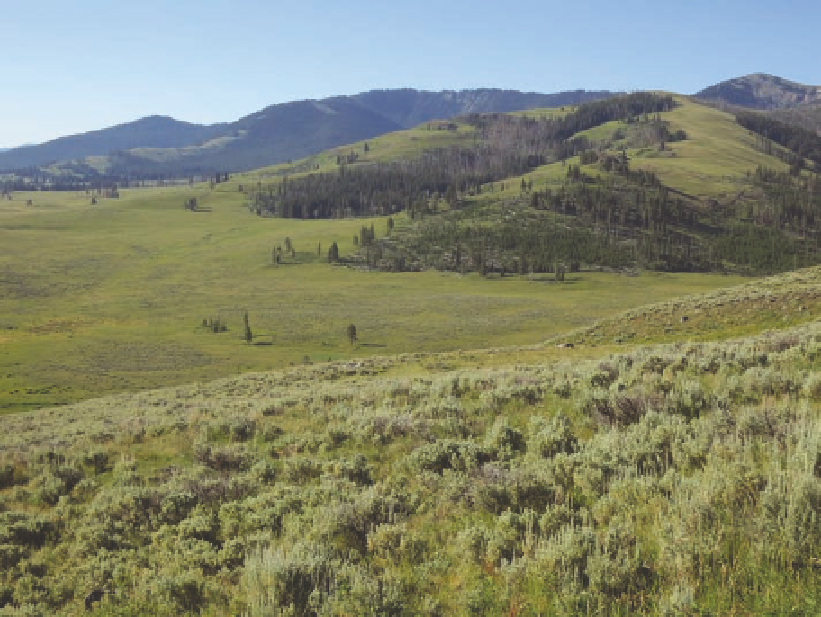Geoscience Reference
In-Depth Information
Fig. 15.6. Mountain big sagebrush steppe and foothill grass-
lands are widespread in the valleys of the Lamar and Yellow-
stone rivers, an area known as the northern winter range
of Yellowstone national Park. the forests and woodlands at
this elevation are dominated by Douglas-fir, many of which
have been killed by the Douglas-fir beetle. the grasslands are
dominated by bluebunch wheatgrass and Sandberg bluegrass.
elevation 7,000 feet.
found above treeline, along with other alpine plants
common in the region (see chapter 14).
Several plant species are found only around hot
springs and geyser basins, including Ross' bentgrass—a
plant that is endemic to Yellowstone. the mineral-rich
water of these thermal features creates a saline envi-
ronment, and consequently, the characteristic plants
include such halophytes as alkali cordgrass, Baltic rush,
meadow barley, and seaside arrowgrass. the chemical
composition of the water varies from one geyser basin
to another, with the result that both terrestrial and
the rock formed at Mammoth Hot Springs is rich in cal-
cium carbonate (travertine), but the rock around other
springs is rich in silica (sinter, also known as geyser-
ite). Much of the color variation among geyser basins
is caused by the varying temperature tolerances of dif-
ferent species of bacteria and algae, some of which are
able to survive at near-boiling temperatures. new geo-
thermal springs develop periodically, sometimes kill-
ing trees over large areas.
Grand Teton National Park
Ferdinand Hayden returned to Yellowstone country in
1872 and sent a detachment, including photographer
William H. Jackson, to explore Jackson Hole. the party
collected information on natural resources, took some
photographs, named many of the lakes and mountain
peaks in Jackson Hole and the tetons, and claimed to
have been the first euroAmericans to climb the Grand
teton, though that has been disputed.
27
After 1872 the lands in YnP were off limits to set-
tlers, but Jackson Hole was still available. named after
early fur trader David Jackson, the town of Jackson
important occupation in the valley at the same time as
potato farming developed in nearby idaho at lower ele-
vations. to provide a more reliable source of irrigation

Search WWH ::

Custom Search